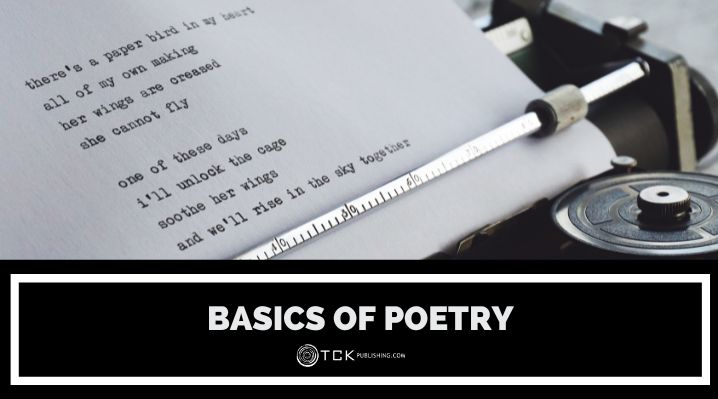
Poetry is all around us—in songs, journals, and even history books. It’s more than just words; it’s a unique way to express and understand the world.
It might seem tricky at first, but like any art, it gets easier with practice. Let’s discuss the basics of poetry, how you can enjoy it more, and why it’s such a powerful way to express yourself.
What Is Poetry?
Poetry is an art form that uses the aesthetic, rhythmic, and figurative elements of a language to evoke emotions or share ideas. It tells a story in concentrated form, through carefully chosen words and structure.
Unlike prose’s more direct storytelling, poetry thrives on imagination and open interpretation. As such, poems often break traditional rules. This allows for imaginative structures and unique ways of storytelling. It is what makes poetry hard to define but also more enjoyable to read and write.
Throughout history, poetry has served as a way to connect people. From Homer to modern spoken word, poetry has evolved through the ages but always aims for one thing: to move and inspire.
Elements of a Poetry
Think of a poem as a puzzle, with each piece working together to create something beautiful. Here are its usual building blocks:
Lineation
Lineation is how words are arranged into lines and line breaks in a poem. The way lines are organized can influence a poem’s tone, rhythm, and meaning.
The simplest part of a poem is the line—a single row of text. A line break marks where one line ends and another begins.
When lines group together, they form a stanza. They can vary in size: two lines make a couplet, three make a triplet, four form a quatrain, and so on.
There are endless creative possibilities with lineation. For example, concrete poetry arranges words into shapes, turning the poem into a visual experience.
Rhyme
Rhyme is the repetition of similar sounds or syllables in a poem. While rhyme can occur anywhere in a line, end rhymes—where the final words of lines rhyme—are the most common.
Words rhyme in different ways. A full rhyme pairs words with identical sounds, like sick and lick. A half rhyme uses words with similar, but not identical, sounds, like lock and duck.
A rhyme scheme is the pattern of rhymes throughout a poem. Common examples include AAAA, ABAB, or ABBA. A famous one is in Shakespeare’s sonnets: ABAB, CDCD, EFEF, GG.
Lines don’t necessarily need to rhyme, though. Free verse allows writers to focus on rhythm, imagery, and meaning without the constraints of rhyme. This can result in equally powerful poetry that feels more natural and expressive.
Meter
Meter is the structured rhythm created by patterns of stressed and unstressed syllables in a line. These patterns are measured in units called “feet.” Common types of meter include:
- Iambic: unstressed-stressed (e.g., to-DAY).
- Trochaic: stressed-unstressed (e.g., LOVE-ly).
- Dactylic: stressed-unstressed-unstressed (e.g., HAP-pi-ly).
The number of feet in a line determines its length, such as pentameter (five feet) or tetrameter (four feet). For instance, iambic pentameter, used by Shakespeare, has five iambs in each line:
Shall I compare thee to a summer’s day?
Thou art more lovely and more temperate:
Rough winds do shake the darling buds of May,
And summer’s lease hath all too short a date:
Meter adds a musical quality to poetry, influencing its tone and mood. While many poets follow strict metrical patterns, others play with meter for more flexibility and creativity.
Poetic Language
Poetic language refers to the expressive and creative use of words to evoke emotions, paint vivid imagery, or convey deeper meanings. It often goes beyond the literal to create a sense of beauty, rhythm, and emotional resonance.
Techniques involving poetic language are called poetic devices. Some examples are:
- Alliteration: The repetition of initial consonant sounds to create rhythm and draw attention. (The silver sea shimmered silently.)
- Assonance: Repetition of vowel sounds. (On a proud round cloud in white high night
) - Metaphor: A direct comparison between two unrelated things to suggest they are alike. (Her voice was a soft blanket, wrapping me in comfort.)
- Onomatopoeia: Using words to mimic the sound it is trying to describe. (The bees buzzed, and the brook babbled.)
Popular Forms of Poetry
Poetry comes in many shapes and structures, each offering unique ways to express ideas and emotions. Here are five popular forms:
Sonnet
A sonnet is a 14-line poem, typically written in iambic pentameter and with a specific rhyme scheme. It is famous for exploring themes of love, beauty, and morality.
Two famous types of sonnet are:
- Shakespearean: ABAB CDCD EFEF GG (ends with a rhyming couplet).
- Petrarchan: ABBAABBA (octave) followed by various sestet patterns (e.g., CDECDE).
An example is How Do I Love Thee? (Sonnet 43) by Elizabeth Barrett Browning. Here’s an excerpt:
How do I love thee? Let me count the ways.
I love thee to the depth and breadth and height
My soul can reach, when feeling out of sight
For the ends of being and ideal grace.
I love thee to the level of every day’s
Most quiet need, by sun and candle-light.
I love thee freely, as men strive for right.
I love thee purely, as they turn from praise.
Limerick
A limerick is a humorous five-line poem with a strict AABBA rhyme scheme. It’s famous for its playful tone and often absurd content.
Here’s a famous one by Edward Lear:
There was a Young Lady whose chin,
Resembled the point of a pin:
So she had it made sharp,
And purchased a harp,
And played several tunes with her chin.
Haiku
A haiku is a traditional Japanese three-line poem with a 5-7-5 syllable count. It is famous for its simplicity and the way it captures fleeting moments of nature’s beauty.
One of the best known examples is Matsuo Bashō’s “old pond”:
old pond
frog leaps in
water’s sound
Free Verse
Free verse has no strict rules for rhyme, meter, or line length. It’s the best poetry form for flexibility and creative freedom. It’s often used in modern poetry to reflect on personal emotions and observations.
Poet and essayist Walt Whitman is considered the father of free verse. Here’s an excerpt of one of his works, I Hear America Singing:
I hear America singing, the varied carols I hear,
Those of mechanics, each one singing his as it should be blithe and strong,
The carpenter singing his as he measures his plank or beam,
The mason singing his as he makes ready for work, or leaves off work,
Conclusion
Poetry is a literary form that thrives on breaking boundaries and bending the rules. It’s a playground for creativity, where structure and freedom exist side by side.
It’s this ability to explore that gives poetry endless ways to express thoughts, emotions, and experiences. Stories become personal, whether you’re writing them or simply reading them.
Do you write or read poetry? Share your thoughts below!
If you enjoyed this post, then you might also like:
- 7 Tips On Deconstructing Poetry
- What Is Found Poetry? Examples and Tips for Making Your Own Found Poem
- 8 Japanese Poetry Styles Aside from the Haiku
- How to Rhyme: Types, Examples, and Tips for Rhyming in Poetry and Music

Cole is a blog writer and aspiring novelist. He has a degree in Communications and is an advocate of media and information literacy and responsible media practices. Aside from his interest in technology, crafts, and food, he’s also your typical science fiction and fantasy junkie, spending most of his free time reading through an ever-growing to-be-read list. It’s either that or procrastinating over actually writing his book. Wish him luck!
